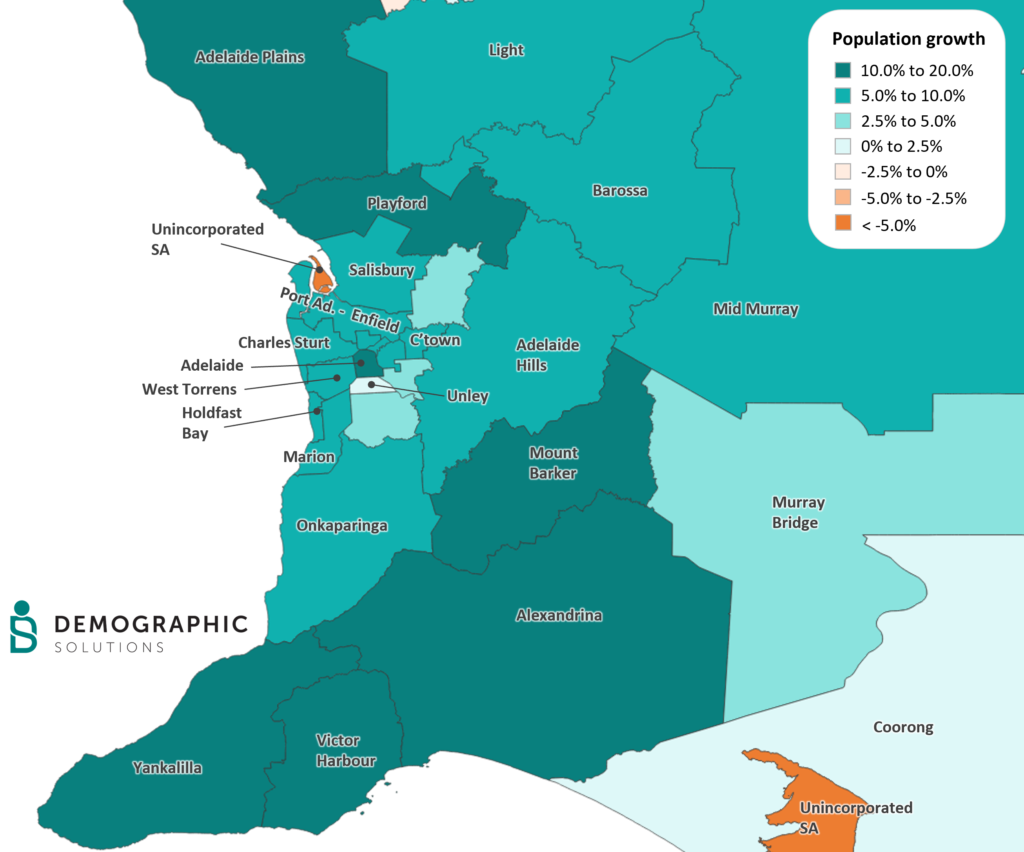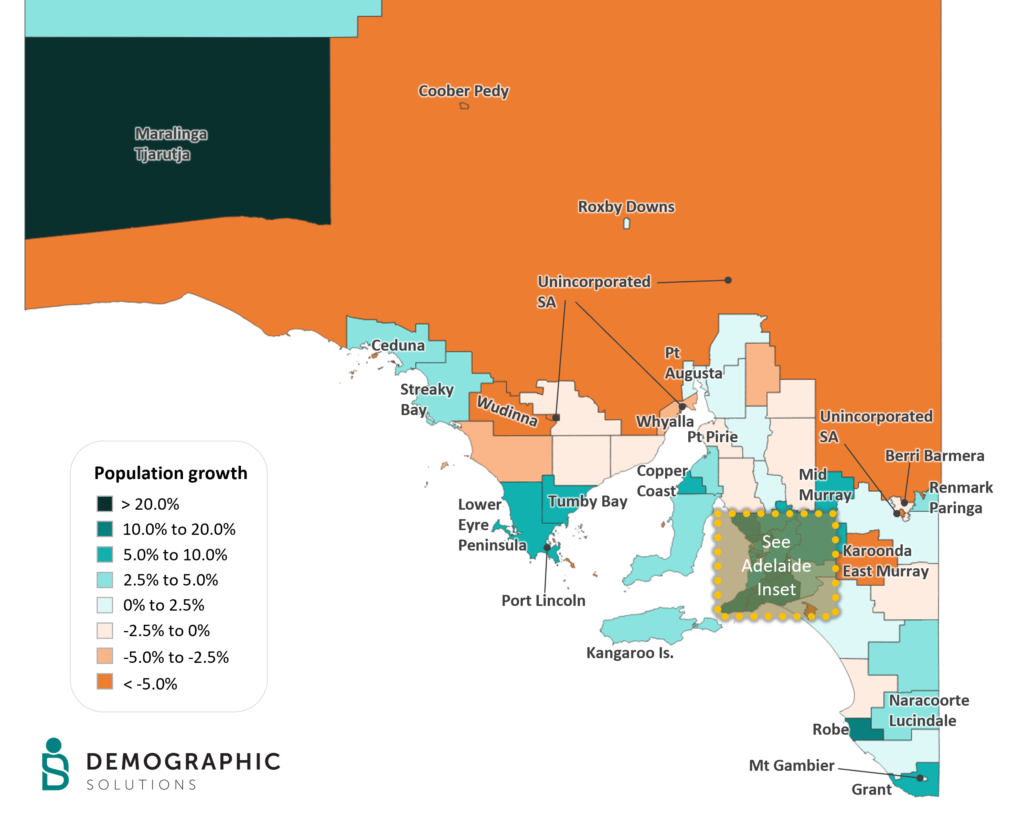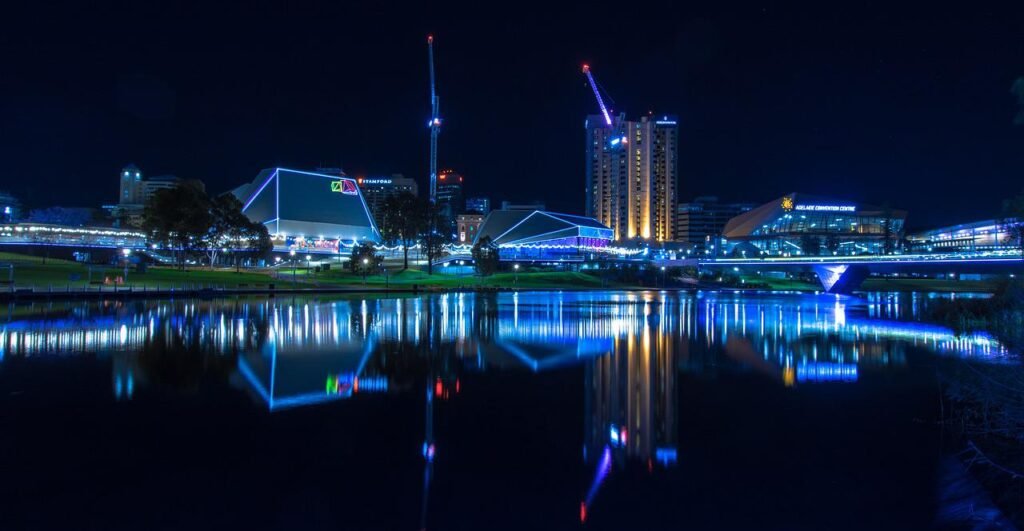What does the ABS 2021 Census tells us about population growth rates across Southern Australia?
Despite the overall rate of population growth in SA experiencing strong gains from 2016 to 2021 (6.3%), not all LGAs across the state benefited from the large overseas migration gain that preceded the COVID-19 pandemic. The fastest growing LGAs between 2016 and 2021 were mainly the outer and fringe areas of Adelaide, where greenfield development was the most predominant. Maralinga Tjarutja Council was the fastest growing Council in remote northern South Australia with a 50%+ increase, although the gain was just 34 persons.
Most coastal areas grew strongly in the lead up to 2021, with the highest rates of growth in Yankalilla, Robe, Alexandrina and Victoria Harbor. The fastest growing LGA in the established parts of Adelaide were the City of Adelaide and Campbelltown. These areas gained significant additional dwellings through higher and medium density development. See table below.
Top 10 Growth LGAs by rate, SA, 2016-2021

Source: ABS Census of Population and Housing, 2016 and 2021
Almost all LGAs in Adelaide had population growth, although the fastest rates of gain were on the fringe, notably Mount Barker and Playford. The growth in these areas was driven by high rates of greenfield residential development in the new estates. Population growth was more moderate in the inner areas of Adelaide, with Unley only having 2% growth between 2016 and 2021. See map below.
Population growth, Greater Adelaide LGAs and surrounds, 2016-21

Source: ABS Census of Population and Housing, 2016 and 2021
Areas with significant redevelopment precincts and new apartment development, such as Campbelltown, Port Adelaide Enfield, Charles Sturt, West Torrens, Holdfast Bay and Marion grew strongly between 2016 and 2021.
Most of the population growth in Regional SA was along the coastal fringe to the south and north of Adelaide. There was also considerable growth in the South-East, Yorke Peninsula and the Lower Eyre Peninsula – around the major centres of Mount Gambier and Port Lincoln, even though these centres themselves only had moderate increases. Copper Coast Council centred on the historic mining towns of Kadina, Moonta and Wallaroo had notable growth from 2016 to 2021. It is possible that coastal growth was boosted between 2016 and 2021 because of the large holiday home stock, which were occupied at a much higher rate due to the ongoing effects of the pandemic in August 2021. See map.
Population growth, Regional SA LGAs, 2016-21

Source: ABS Census of Population and Housing, 2016 and 2021
Another noteworthy observation was the notable population loss that occurred in the interior north, mid-north and west. Drought conditions were particularly severe in these areas from 2017 to 2019, creating enormous pressure on the farming sector and small towns of this region. The larger centres of Whyalla and Port Pirie also declined to 2021.
For more stories from the 2021 Census and our quickfire series on LinkedIn, stay tuned to this space!

